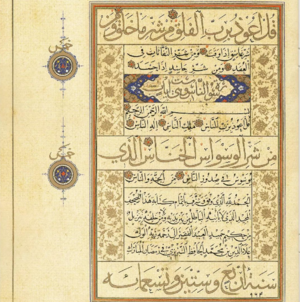Main Page: Difference between revisions
Nazarzadeh (talk | contribs) No edit summary |
Nazarzadeh (talk | contribs) No edit summary |
||
| (15 intermediate revisions by 2 users not shown) | |||
| Line 8: | Line 8: | ||
<span style = "white-space: nowrap">Online Encyclopedia of Answering Questions and Doubts </span> Affiliated to the <span style = "white-space: nowrap">Center for Studies and Answering Doubts (Islamic Seminary)</span> | <span style = "white-space: nowrap">Online Encyclopedia of Answering Questions and Doubts </span> Affiliated to the <span style = "white-space: nowrap">Center for Studies and Answering Doubts (Islamic Seminary)</span> | ||
</h3> | </h3> | ||
<h3 style = "font-size:110%; border:none; margin: 20px 5px; padding: 0; text-align: center">with [[wikipasokh:List of articles|{{NUMBEROFARTICLES}}]] Articles in English; and More Articles in [[:fa:|Farsi]], [[:ar:|Arabic]], [[:es:| | <h3 style = "font-size:110%; border:none; margin: 20px 5px; padding: 0; text-align: center">with [[wikipasokh:List of articles|{{NUMBEROFARTICLES}}]] Articles in English; and More Articles in [[:fa:|Farsi]], [[:ar:|Arabic]], [[:es:|Spanish]], [[:fr:|French]], [[:ps:|Pashto]], [[:ur:|Urdu]], [[:ru:|Russian]], [[:ms:|Malay]], and [[:bn:|Bengali]] | ||
</span> | |||
</div> | </div> | ||
</div> | </div> | ||
| Line 25: | Line 26: | ||
| image = | | image = | ||
| content = | | content = | ||
<center>[[ | <center>[[File:سوره های ناس و فلق.png|300px]]</center> | ||
<center>A | <center>A page of the Quran<br>in the handwriting of Ahmad Neyrizi</center> | ||
}} | }} | ||
{{mainpage box | {{mainpage box | ||
| Line 34: | Line 35: | ||
| image = | | image = | ||
| content = | | content = | ||
<div style = "overflow: hidden; -moz-column-width: | <div style = "overflow: hidden; -moz-column-width: 20em; -webkit-column-width: 20em; column-width: 20em;"> | ||
<DynamicPageList>namespace = | <DynamicPageList>namespace = | ||
count = 16 | count = 16 | ||
| Line 137: | Line 138: | ||
[[fa:]] | [[fa:]] | ||
[[ar:]] | [[ar:]] | ||
[[bn:]] | |||
[[es:]] | [[es:]] | ||
[[fr:]] | |||
[[ms:]] | |||
[[ps:]] | [[ps:]] | ||
[[ru:]] | |||
[[ur:]] | [[ur:]] | ||
